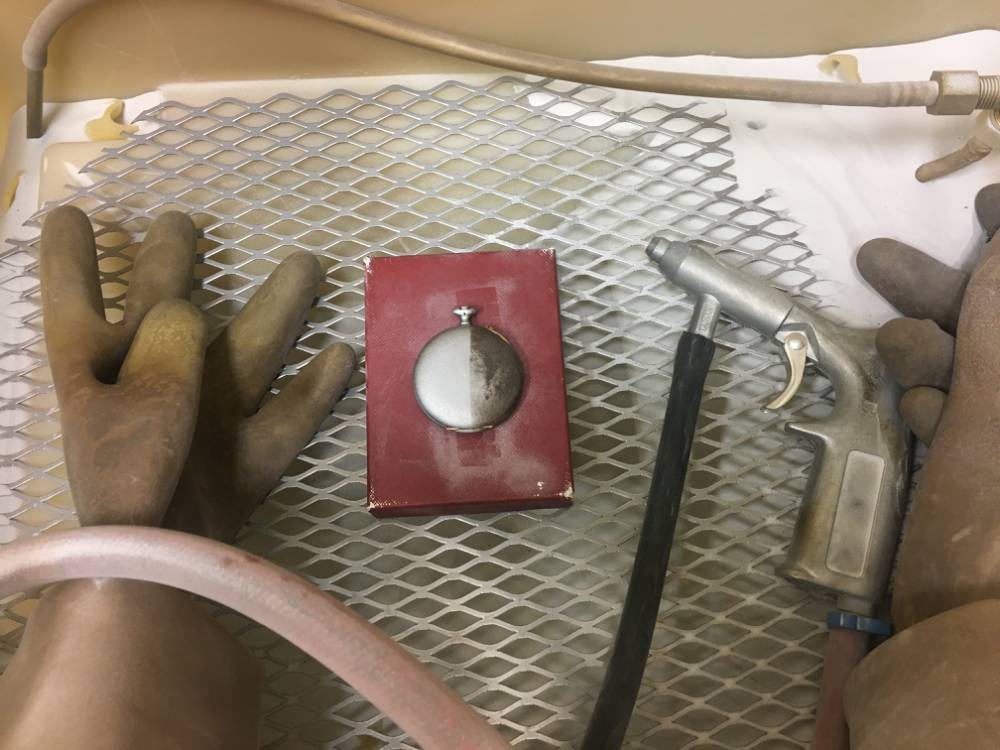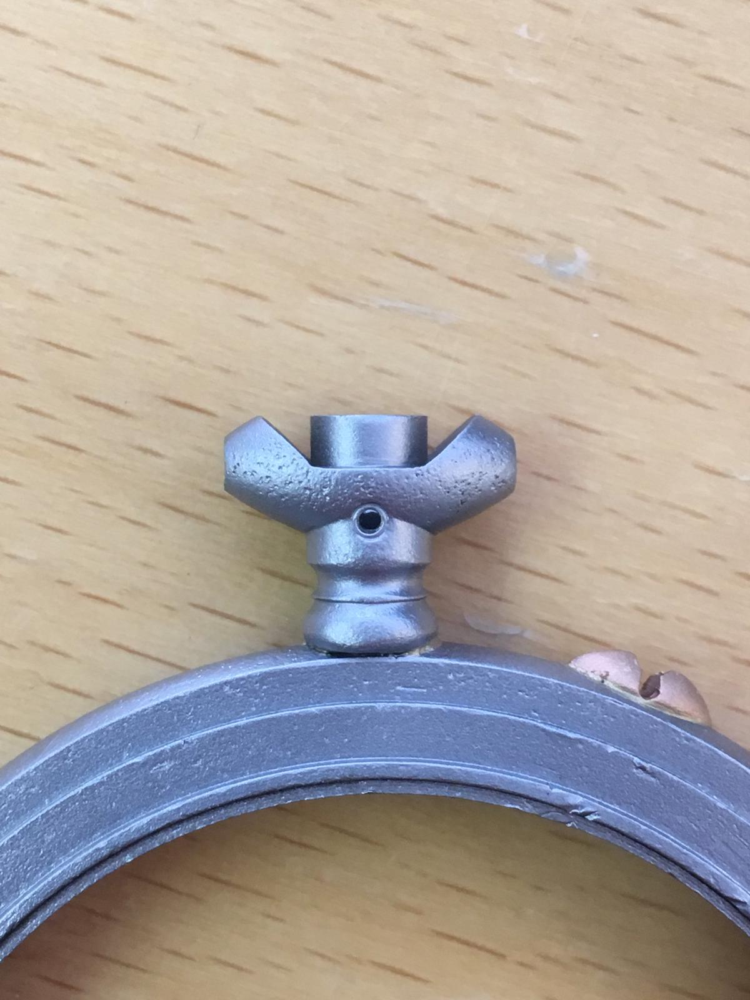If this is the first time you are reading this thread -then click here for
part 1
On day 73 of the virtual pocket watch museum, in responce to Tonny's posting
of a steel cased IWC Pocket Watch, I shared this steel cased watch with
you, and laid out a challenge to Jeroen. In short, can we save this bit of IWC
history and restore it ?

[Rust Bucket - See it here](/t/virtual-pocketwatchmuseum-
day-73-cal-57-steelandgold/31939/post/280693/)
Being the watchmaker he is, he accepted the challenge.
During the life time of the project, come good times or bad (as is the case
with most restoration projects that start out like this), we will share the
progress, trials and tribulations with you.
This will be in the form of a photo essay.
Day # 2 - Stage One Case Restoration
Todays work saw Jeroen in the first instance, disasemble the case down to the
bare metal parts. Typically, these are not "user removable" parts and the
hinged case backs, the front bezel and of course the crown bow ring (to which
one attaches the fob watch chain or hangs the watch up on) need a steady hand
and quiet a bit of experience to remove. Least ways to remove it in a way,
that the watch could ever be re-assembled again.
Here the disasembled seperate components, are put into the Elma RM 90 cleaning
machine.

It vibrates and it turns - it swiches and washes with a number of different
chemicals (all very watchmaker top-secret stuff, to which I am not privy
otherwise I would share it), and after due process of time the parts come out
and are thoroughly degreased and clean.

The inner case back (movement dust cover) pictured here bottom at the bottom,
whilst corroded is clearly in better shape than the outer cover (top right).
The next stage, is after the first high tech stage, a lot less technical (or
so I thought), The clean and oil free parts are then bead blasted - to remove
all traces of oxidation and rust (wait a moment... isnt that the same thing.
No, rust is a form of oxidation siting on the steel while the brass rings and
case lip edges are not rusted - just oxidised? Did I get that right?)
Bead blasting is the process of removing all the surface deposits by applying
fine glass beads at a high pressure without damaging the surface. The last
3 words Jeroen tells me are the critical ones. Although not high tech - get it
wrong and you are left with very little metal on the case!

The back is tempoary put back on, to ensure all parts are equally blasted and
not that one part get more metal removed than the next.
Clearly, here above, he has paused half way into the job, in order to take the
photo. A close up reveal that this was really a rust bucket!

Cant stop now, and all parts of the case are glass beaded down to produce the
bare metal parts.

Then its back into the cleaning machine (to remove all traces of the silica
dust from the bead blasting) and the outcome are the blasted and clean parts
back on the watchmaker workbench ready for inspection.

It 's decision time!
What are we going to do. At this stage, it's clear that the metal was pretty
badly corroded - and there is a fait amount of pitting all over including on
the crown neck.

This is where Jeroen and I have serious discussion. I'm a stickler for "
restore to condition of the day it left the manufactory " and Jeroen is more
of a purest. He argues that it's a watch thats over a 100 years old (it dates
from 1916) in an original cheap steel case and that while we could start to
surface treat the bare metal, sanding down to the a smooth surface, he is not
a fan of this. The puts forward that the structural integrity of the case back
would be compromised, and the end result (becuase once you start emery board
sanding there is no stopping until it's mirrot smooth) will make the case look
to new, showing no sign of patina of 104 years.
I listen to the voice of reason from the maestro. We will not replace parts of
the case, or remake parts - rather opting to restore "as best".
Next step will be the surface treatment of the parts, to prevent further / new
rusting taking place and of course, put a finish on the metal which fits the
description in the case book in Schaffhausen " Oxide " !
Whilst all of this was happening in Jeroen's attelier (watchmakers studio), I
was doing the homework given of me. Namely to decide what to do with this
shatered dial.

As I meantioned in the first post, I've not seen such a dial on any of my IWC
pocket watches, and it's clear that the blue inner numbering is actually
original to the dial as it's 100% enamel (emaille) and not painted on as an
after market upgrade sometime later.
I like this blue touch - but there is not IWC marking or logo on the dial and
I am not sure if it is original to the watch. So I put this question to the
archive experts.
In parallel to this, I am looking at what we have in the spares department
here as a possible replacement dial.
Two steps in this process :
 Step 1)
Step 1)
Diameter : The replacement dial has to be exactly the same diameter as the
original in order to sit properly under the bezel of the case.
In this case I've measured in two direction on the original and come up with
44.51mm and 44.50mm in the opposite plane. The variance here, is due to the
thickness of the enamel covering over the copper blank of the dial. I opt for
44.5mm - which is as dials go quite a large dial.
Step 1) Dial Feet : Note the red arrows.These designate the positon of
the holes ive punched through the paper by pressing the dial down so that the
dial feet pierce the paper. Each movement and calibre type has different
postioning of the holes in the main plate through which the legs fit.
Some movement / dials have only two feet, others three. All feet postitioned
in unique areas of the dial and the most important detail here is that it's
not only that the three feet should fit the holes, but that when seated that
the top of the dial (12 marker) is exactly in the correct position. Sometime
when doing this excercise, I find a dial that has the correct dial feet and
diameter but when positioned on the tempate the 12 does not line up with the
top of the watch.
But this time I got lucky! See below. A genuine IWC dial in poerfect condition
with th right diameter and right feet placing.

So we have a viable option.
But, as things turn out research in Schafhausen based on the unique watch
number and the sales ledgers there is a note made against the sale of this
pocket watch.
If you look at the description of the dial it shows that that blue and white
24 hour dial is original and genuine to the watch. The "13/24" centre dial is
mentioned.

The watch was sold to Erbau in Paris on the 1st of December 1916.
So, in my mind ultimatly that original dial needs to be restored - possibly
even adding the IWC logo to it.
Watch this space for Day 3 of the Virtual Pocket Watch Museum Restoration
Project.